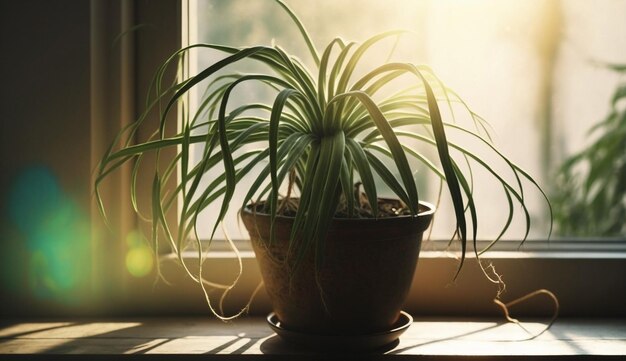
Sponsored article
Bringing nature indoors is a wonderful way to invigorate your living spaces, yet many struggle with finding the right plants for areas lacking natural sunlight. Thankfully, not all plants require bright, sunny windowsills to flourish. Low-light indoor plants are perfect companions for sprucing up dim corners or shadowy rooms. This guide will help you select the best plants for low-light environments, ensuring they not only survive but thrive in your home or office.
Integrating indoor plants into low-light areas of your home or office comes with numerous advantages, making them a smart choice for enhancing both aesthetics and well-being. One of the most significant low-light plants benefits is their ability to improve air quality. Many plants actively filter airborne toxins, making the air cleaner and more breathable. This feature is especially valuable in enclosed spaces where ventilation might be limited. Moreover, indoor plants also release oxygen, contributing to a fresher atmosphere and promoting healthier living conditions. By choosing the right plants adapted to low-light environments, you can enjoy these air quality improvement benefits without worrying that the plants will struggle in the absence of sunlight.
Embracing the beauty of nature within your indoor spaces fosters a peaceful, calming environment, directly impacting mood and productivity. Studies have shown that having greenery indoors can reduce stress levels and boost overall mental well-being. Further, the aesthetic value these plants bring cannot be overstated. They effortlessly add a touch of natural elegance and life to dull corners, transforming any space into a vibrant and inviting area. These indoor plant advantages help cultivate a more welcoming and tranquil ambiance, perfect for personal relaxation or creating a more inspiring workspace. With careful selection, even low-light spaces can support an array of beautiful plants, merging functionality with beauty in any setting.
Finding the best low-light plants for your home or office can transform dim spaces into lush sanctuaries. One popular choice is the Snake Plant, prized for its striking upright foliage and ability to purify the air while thriving on minimal sunlight, making it ideal for bedrooms and offices. The ZZ Plant is another indoor plant for low light that boasts glossy, wand-like stems which make it a durable option for those looking to add greenery to windowless bathrooms or hallways. For a living touch in darker corners, the Cast Iron Plant is almost indestructible, enduring neglect while displaying its dark green leaves elegantly in any room.
Consider the Peace Lily, with its graceful white blooms, offering both beauty and ease of care in low-light settings, making it perfect for office desks or living rooms. Spider Plants are excellent houseplants for dark rooms due to their adaptability and the bonus ability to produce “pups” that add charm when hung in baskets. Lastly, the Pothos plant, with its trailing vines, can liven up spaces like kitchen corners or lower bookshelves, requiring little light to maintain its vibrant foliage. These indoor plants for low light not only survive but thrive, making them perfect companions for any shaded area.
Mastering low-light plant care begins with understanding the unique needs of your plants in dim environments. When maintaining indoor plants that thrive in low light, it’s crucial to adjust your watering routine accordingly. These plants typically require less water compared to their sun-loving counterparts, so allow the top inch of soil to dry out completely before watering again. Overwatering is a common mistake that can lead to root rot, so always check soil moisture levels with your finger. Using room-temperature water can also help prevent shocking the plant’s roots.
Fertilizing houseplants in low-light settings should be approached with care, as too much fertilizer can harm their delicate systems. Opt for a diluted, balanced fertilizer and apply it sparingly during the growing seasons—spring and summer—tapering off in the winter months when plant growth naturally slows down. Additionally, consider occasionally wiping down the leaves with a damp cloth to remove dust buildup, allowing the plants to photosynthesize effectively. By following these steps, you can ensure your low-light indoor plants remain healthy and vibrant.